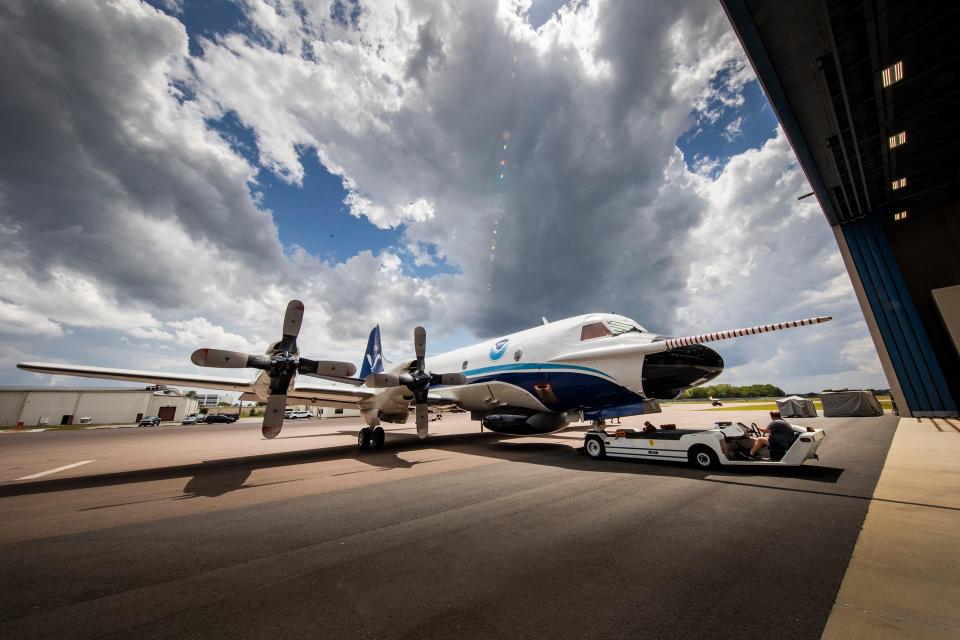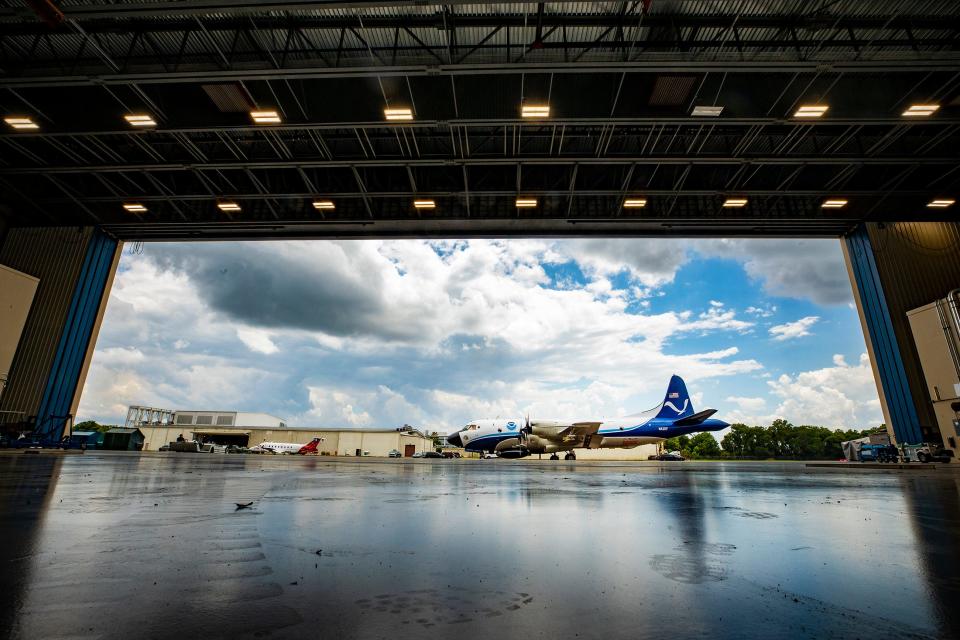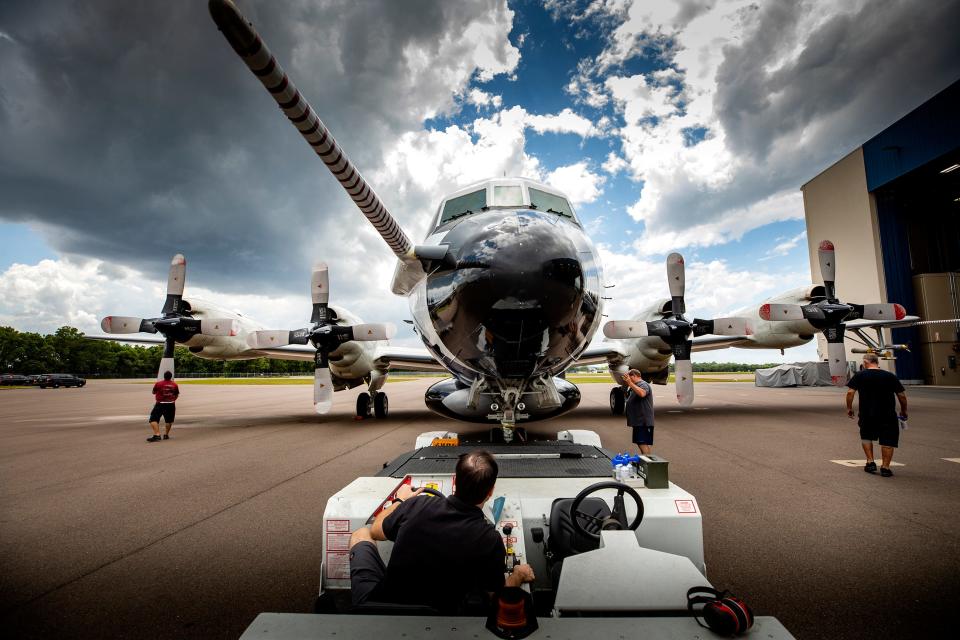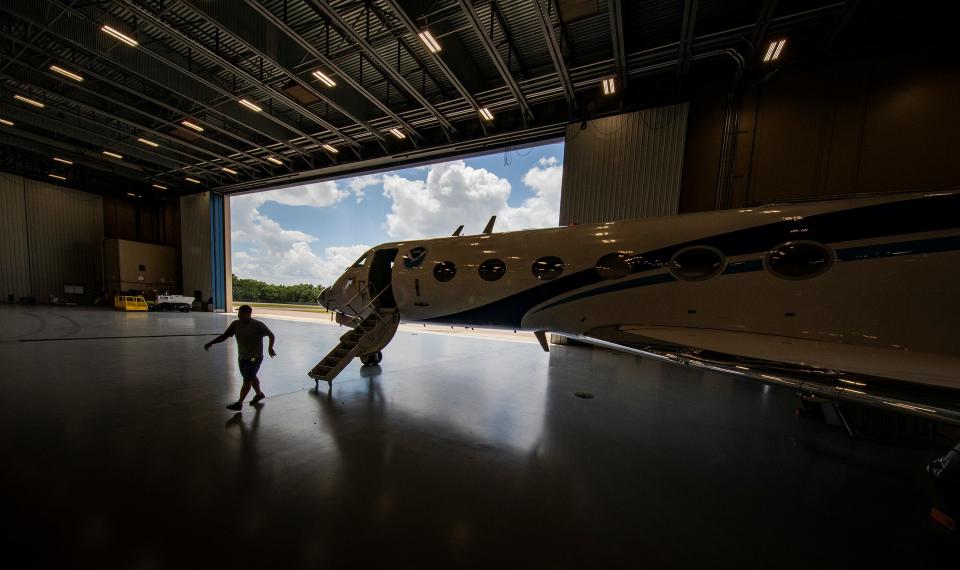'Not necessarily adrenaline junkies', Hurricane Hunters mission is to help those on land
To those on land the United States National Oceanic and Atmospheric Administration (NOAA) Hurricane Hunters may seem like thrill seekers, but they have a commitment to reconnaissance for the purposes of delivering important information during hurricane season.
“We are very calm professional people. We’re not necessarily adrenaline junkies. We know that it is a very important mission," said Public Affairs Specialist for the NOAA Aircraft Operations Center Jonathan Shannon. "We know that getting that data from the storm helps people on the ground prepare and prepare in advance so that they can be in a peaceful state.”
The NOAA Aircraft Operations Center has been stationed in Lakeland since June 2017 and have nine aircraft on site - three of them being hurricane hunters.

The team sees to it systems are calibrated and the maintenance crew checks to make sure everything is in place. In addition to making sure the aircraft is up to date, the pilots and air crew receive up-to-date training.
“We make sure the pilots are current with different operations and conditions we should have," Shannon said. "We make sure our aircrew familiarize themselves back with aircraft.”
The hurricane hunters stay with a storm from its formation until it makes landfall.
“We fly tropical cyclones from the beginning stages when they’re just becoming tropical depressions up to tropical storms, all the way to category from category one to category five until they make landfall,” said Shannon.
“So, we do not fly over land, but we will fly these storms wherever they are over the ocean, typically in the Gulf of Mexico, the Caribbean and up the eastern seaboard,” he added.
The NOAA Hurricane Hunters work in partnership with the National Hurricane Center (NHC) to also gather information for storms in the eastern pacific off the west coast of Mexico and they have even gone as far as Hawaii.

“They (NHC) will task the NOAA Hurricane Hunters to go out to certain storms, to investigate them, to get that real time data of what's going on inside the storm as well as help get the initial conditions that will feed their models or their spaghetti plots, that’ll you see on TV, for the meteorologists," said Shannon.
All the data is formed by Lockheed WP-3D Orion known as P-3 and Gulfstream IV known as G-IV. The operations center has 2 P-3s nicknamed Kermit and Miss Piggy and the G-IV is nicknamed Gonzo.
“Our flights are typically about eight to 10 hours with the P-3 being in the storm environment for four to six of those hours," Shannon said. "Now on the G-IV, they’re flying high, far and fast all the way around the storm, circumnavigating to get all the upper-level information from 45,000 feet down to the surface of the ocean.”

Gonzo will track to see where the storm is going and what conditions are around the storm to see what can help strengthen or degrade the storm. Kermit and Miss Piggy go inside the storms sampling the different sizes of the storm to see what the central pressure is and the maximum wind radius.
“The lower the pressure the stronger the storm and the higher the wind," said Shannon. "The longer the wind blows over the water and the stronger it is, the more water it can move which causes coastal flooding and other issues that would be bad for people who live on the coast.”
Kermit and Miss Piggy hold 15 to 16 people, with three pilots and two flight engineers behind the pilots who are responsible for controlling the power levers which control the engines.
Behind the flight engineers there will be a flight director who is the inflight meteorologist. The flight director packages the information from the dropsondes. The dropsondes measure temperature, pressure, humidity, wind, speed and direction. There are also Airborne Vertical Atmospheric Profiling Station (AVAPS) Operators who deploy the dropsondes, researchers and a navigator on board. Gonzo will hold nine to 10 people with three pilots, one to two flight directors, researchers and AVAPS operators.
While the hurricane hunters are in the air, the data systems analyst and flight director will send information via satellite to the National Hurricane Center and National Weather Service Gateway.
“So that data is available in real time to forecasters, modulars - whoever needs it to make those decisions,” Shannon said.
Information gathered by the hurricane hunters is also dispersed internationally when needed.
“The National Hurricane Center, based in Miami, is part of the World Meteorological Organization. So, they share all their information with the different countries' weather services,” said Shannon.

The Hurricane Hunters' goal is to inform the public while also bringing all members safely back to land.
“Every storm is different. Every storm has different parts that will surprise you as you’re going through it," said Shannon. "But we have a lot of measures in place with training and procedures to make sure it is a safe mission. Even though it is risky we make it safe as we possibly can and we work to return everybody back.”
Breanna A. Rittman writes news features for The Ledger. Send your feature ideas to BRittman@gannett.com.
This article originally appeared on The Ledger: NOAA Hurricane Hunters answer the call during hurricane season

